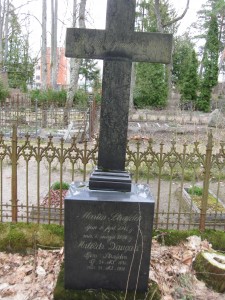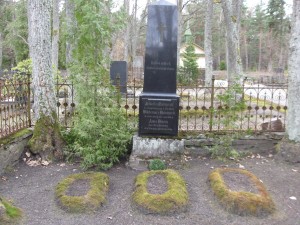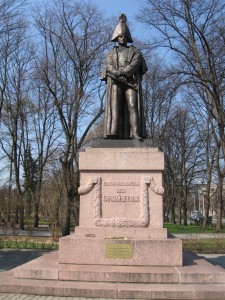I’ve decided to participate in the “Family History through the Alphabet†challenge. I’m a bit late to the party, but I’ll make up for it, don’t worry!
Just how will I do that? Well, I’m going to be using the Latvian alphabet. Which, while still being a Latin alphabet, has several significant differences from the English alphabet. Namely, it does not have a Q, W, X or Y. However, in their place, there are some letters unique to Latvian, and others that are shared with other languages, mostly of Eastern European origins. There are 33 letters in the Latvian alphabet.
My “Family History through the Alphabet†entries are going to revolve around important aspects of Latvian genealogy, Latvian surnames, Latvian history, and so on, rather than my own personal family history.
So, let’s get started, shall we?
A is for Archives
We can all agree that the Internet is a fantastic tool for genealogy – so many digitized records, be they indexed or not, accessible anywhere in the world. Anyone can explore their family history from the comfort of their own home, without needing to travel to distant places, pay exorbitant fees for copies, etc., right?
Well no, not quite. The Internet is a great tool for creating the “skeleton†of a family tree, this is true. Even small countries like Latvia have digitized a number of records to help do this. But that is all it is – a skeleton. Where is the meat on those bones? This “meat†is a key part of family history research, and for that reason I have chosen A is for Archives.
To get any meat on the bones of your Latvian genealogical research, research needs to be done on-site. And for the most part, this on-site research will take place in an archives – one in particular, the Latvian State Historical Archives (LSHA). Even Who Do You Think You Are?, with its constant promotion of Ancestry.com, was unable to avoid having to go to the LSHA during the Rashida Jones episode (for my review of this episode, go here). Ancestry.com does not have any substantial Latvian records (the only ones they do have are transcriptions of a limited set of records transcribed by JewishGen). Raduraksti only has religious records (baptisms, marriages, deaths), revision lists and what exists of the 1897 All-Russia Census for Latvia. But there is so much more to explore on-site at the LSHA.
Examples of what I have found at the LSHA: my great-great-grandfather Robert Francis’ last will and testament, passports with photos of some of my great-great-grandparents, the original land purchase deeds from the mid-1800s for several of my ancestral farms (including maps), visa and other travel document requests, name change documents, military records…. and that is still only the tip of the iceberg!
So, in short: If you want meat on the bones of your family history, a visit to the archives is mandatory. There are so many possibilities, so it is not a resource you want to leave untapped. If you are not able to visit yourself, please contact me – I may be able to help put some meat on those bones for you!



